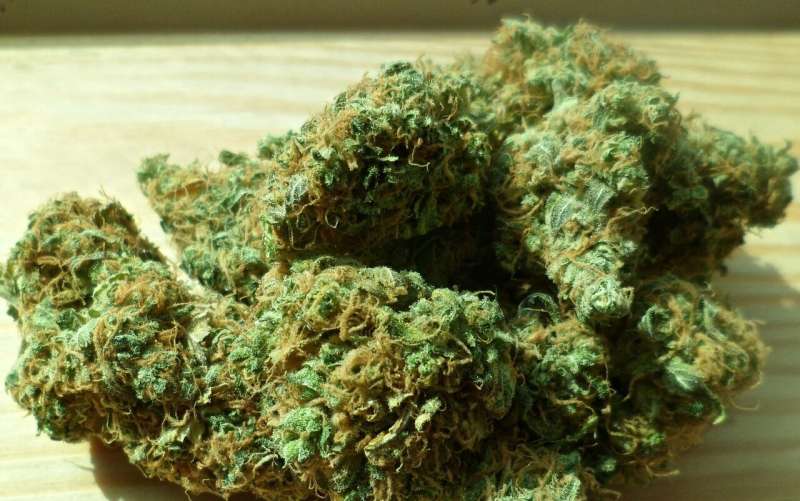Edible cannabis vs smoking weed: How are they different and what are the health effects?

Today's edible cannabis scene has evolved from your stereotypical homemade "pot brownies" into an innovative industry, pushing the tastebuds of both stoners and first-time marijuana users.
There's THC-infused salad dressing, candies, seltzers, cakes, cookies, chocolate bars, potato chips, beef jerky and even specialized multi-course meals. Many of which mask the smell and taste of weed.
But if you typically smoke marijuana or haven't tried edibles before, proceed with caution. While consuming weed and smoking it will bring you to a high, there are some key differences between the two.
Why do edibles feel different?
Unlike smoked or vaped marijuana that enters the lungs and is absorbed into the bloodstream, edibles are processed in the stomach and liver, according to Leafly, a site focused on cannabis education.
That means a couple of things: edibles are going to feel stronger and the effects will last a lot longer.
Edible cannabis has to be digested and metabolized, so it could take up to two hours for the high to peak, according to Leafly. The high will fade over the next three hours, give or take.
Compared to the effects of inhaled cannabis, which typically peaks in 10 minutes and lasts an hour or so.
And although edibles may be strong, they technically deliver a smaller concentration of cannabinoids to the bloodstream. Edibles deliver 10% to 20% of THC, the main psychoactive compound in weed that gets you high. Inhaled cannabis delivers around 50% to 60%.
Health effects: Smoking vs. ingesting cannabis
When you're inhaling cannabis from smoke or vapors, THC travels to your lungs, goes into your bloodstream and then to your brain, according to the Canadian Centre for Substance Use and Addiction.
"Marijuana smoke, just like cigarette smoke, irritates your lungs making it harder for you to breathe," the Los Angeles County public health department said on its website. "This includes secondhand smoke from marijuana."
The agency said marijuana smoke can cause a daily cough, phlegm and risk for lung infections.
Ingesting edibles can help you avoid the risk factors associated with smoke, since it travels to your stomach and liver and then to your bloodstream and brain.
Since effects of edibles may take longer to manifest, people may accidentally consume more than the intended dosage. According to the American Addiction Center, a national network of rehabilitation services, the amount of THC in edibles is difficult to measure and is oftentimes unknown. As a result, people may experience marijuana overdose, or acute marijuana intoxication.
Some common signs of cannabis overdose include extreme anxiety, panic attacks, uncontrollable shaking, paranoia, hallucinations and sudden high blood pressure.
Eat THC products responsibly
Monitoring how much of an edible or THC you are consuming is key to preventing unwanted effects, such as cannabis overdosing.
Most experts say to start slow. According to the Canadian Centre, start with 2.5 milligrams of THC or less, and wait at least two hours before taking another dose.
Edible effects will depend on how often you use cannabis and your tolerance, The Sanctuary, a Sacramento dispensary, advises on its website. It also depends on your body weight, metabolism and type of edible you're eating. If it's your first time or you haven't had an edible in a while, avoid products with 50 to 100 milligrams.
Edibles in dispensaries usually come in 5 milligram or 10 milligram doses, so be sure the dosage is labeled and the product can be cut into smaller pieces.
If you do get too high, The Sanctuary said, "don't panic" and distract yourself with eating, drinking, sleeping or watching TV. Chewing on peppercorns can also take you down from your high.
"It is beneficial to stay in a safe and quiet place and to remain as relaxed as possible," according to the AAC. However, if you experience serious reactions, such as uncontrollable vomiting or irregular heart rate, you should call 911 or seek medical attention.
Here's a basic guideline to edibles and their milligrams, according to Leafly:
— 1 to 2.5 milligrams—Micro dose for first time and regular consumers.
— 5 milligrams- Standard use for consumers.
— 10 milligrams—For high tolerance users.
— 20 milligrams—For significantly high-tolerance users.
— 50 to 100 milligrams—For experienced high-tolerance users.
How to store edible marijuana
In general, store edibles in a dark place away from extreme temperatures inside an airtight container, according to cannabis packing company Green Rush Packaging. But if your product needs to stay cold, keep it cold.
Here are a couple of factors that may affect the quality of an edible once it's stored, according to Green Rush Packaging:
— Humidity—Could damage the flavors and concentrations of edibles.
— Sun Exposure—Could damage the flavors when exposed to excessive or direct sunlight.
— Contamination—Edibles may get contaminated by substances or insects.
©2022 The Sacramento Bee.
Distributed by Tribune Content Agency, LLC.




















